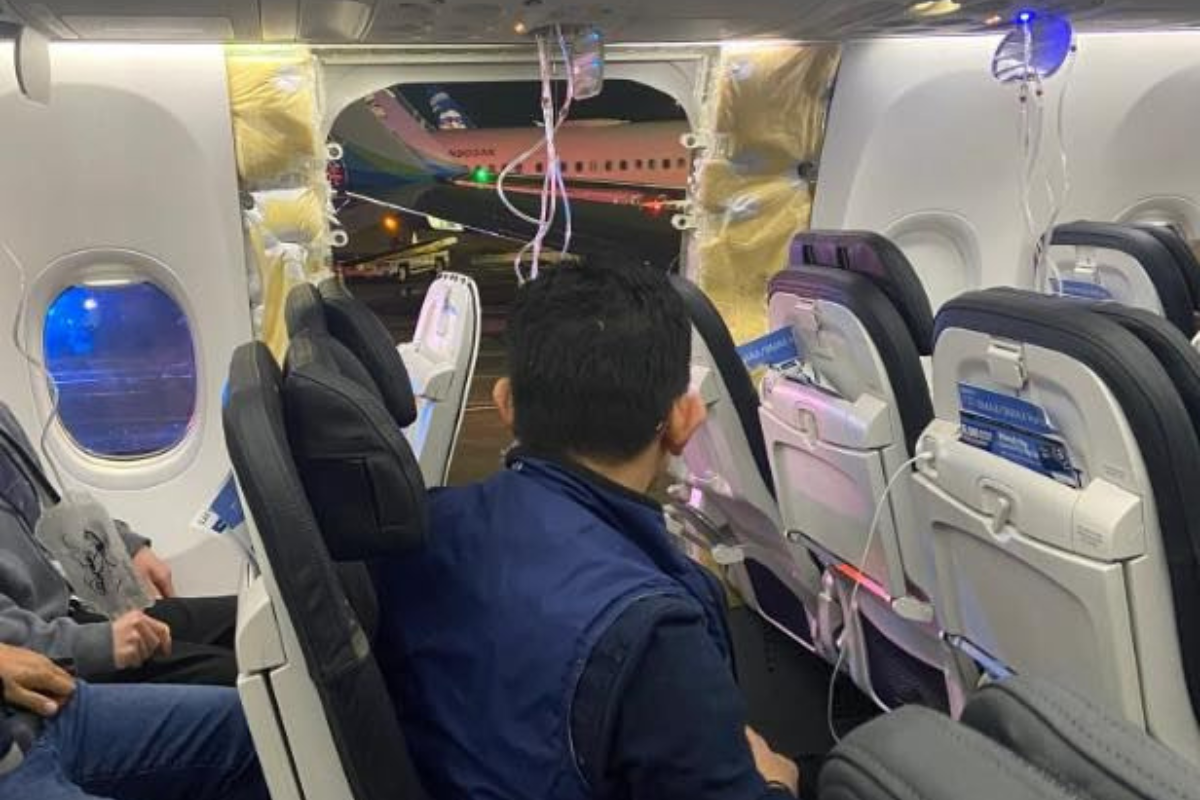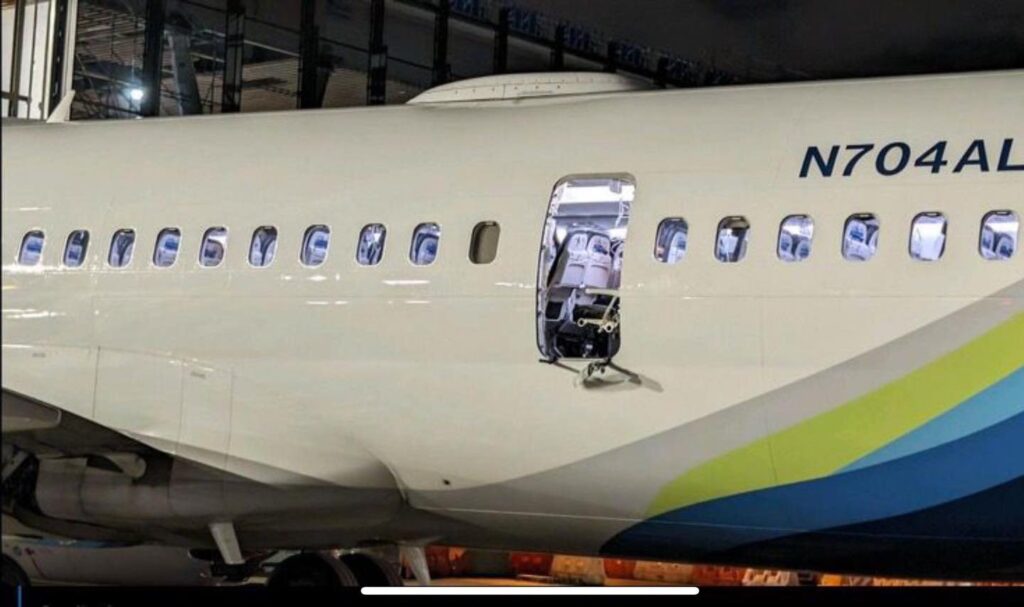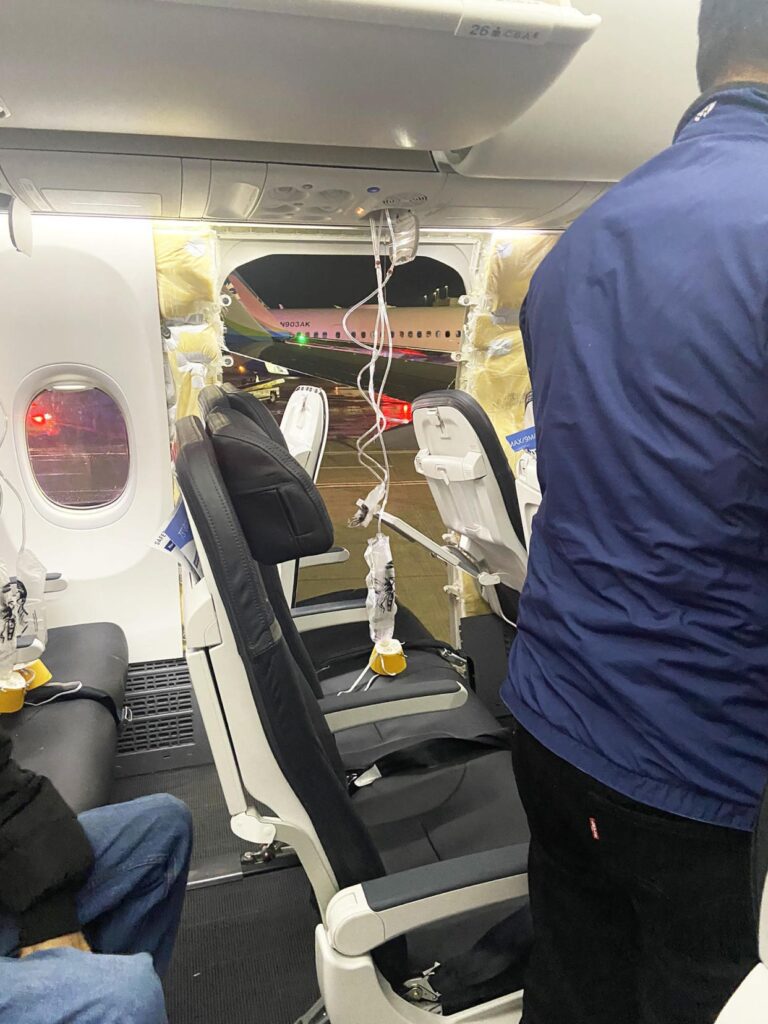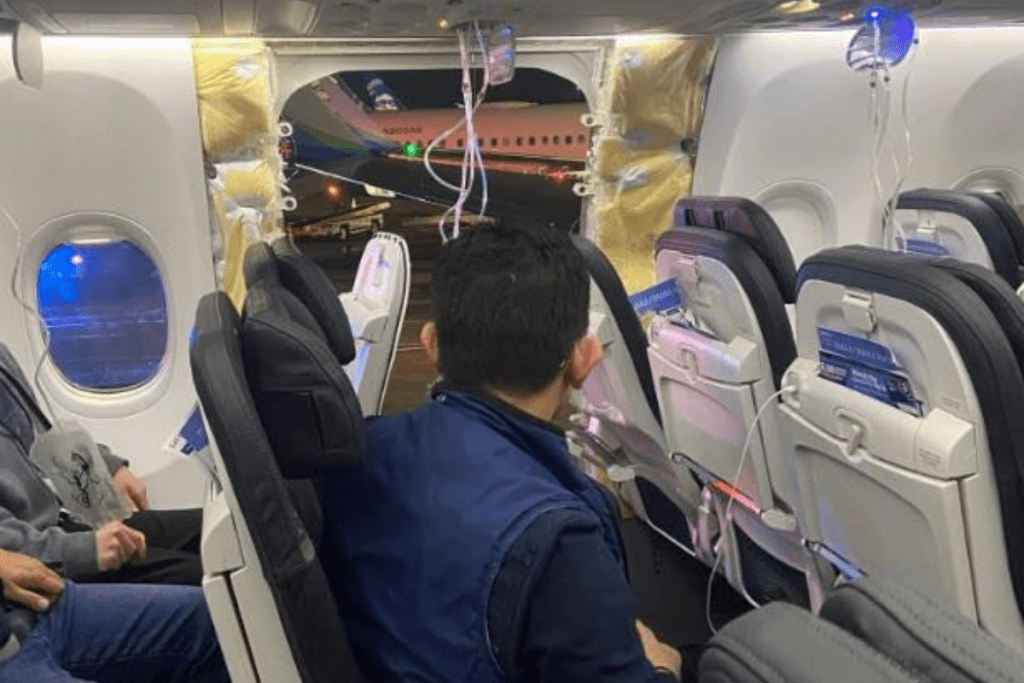
A brand new Boeing 737 MAX 9 operated by Alaska Airlines suffered a ‘rapid depressurization’ on Friday evening after a deactivated emergency exit blew out at 16,000 feet shortly after takeoff from Portland.
Miraculously, all 171 passengers and six crew members onboard flight 1282 to Ontario escaped without injury after the pilots successfully made an emergency landing back at Portland Airport.
Flight attendants onboard the aircraft, which was delivered to Alaska Airlines from aircraft manufacturer Boeing less than a month ago, described the depressurization as ‘explosive’ and one of the four flight attendants onboard the plane suffered minor injuries.
The Boeing 737 MAX 9 has a maximum of 10 emergency exits, two sets of full-sized doors at the front and rear of the aircraft, four window-sized overwing exits and a set of half-sized emergency exits approximately two-thirds down the aircraft.
These half-sized exits are designed for high-capacity configurations of the MAX 9, but in the layout chosen by Alaska, these exits have been permanently deactivated or, in aviation speak ‘plugged’.



From a passenger’s viewpoint, there is no way of knowing that you are sitting at a plugged exit because the cabin looks normal from the inside. From the outside, however, you can see the outline of where an exit could be.
Alaska flight 1282 departed Portland at approximately 5:06 pm on Friday and climbed to around 16,300 feet before the deactivated suddenly blew out and the pilots initiated an emergency descent.
Passengers onboard the aircraft quickly donned their oxygen masks, which automatically dropped from the ceiling above as the aircraft, registered as N704A, suffered a rapid depressurization.
Thankfully, no one was sitting in the seat immediately adjacent to the deactivated emergency exit.
The Federal Aviation Administration (FAA) and National Transportation Safety Board (NTSB) have both confirmed they are investigating the incident. In a statement, Boeing noted that it was “working to gather more information and are in contact with our airline customer.”
“A Boeing technical team stands ready to support the investigation,” the statement continued.
“The situation could have turned catastrophic without the exceptional skills and professionalism of the working Flight Attendants and pilots,” the Association of Flight Attendants (AFA-CWA) said in the hours after the accident.
“We commend the entire crew for their outstanding work under such trying circumstances.”
“Alaska Airlines management must take all necessary and immediate action required to ensure the safety of crew members and passengers in light of today’s events,” a spokesperson for the union said.
The Boeing 737 MAX 9 was the first variant of the MAX family that Alaska took delivery of, and the airline now operates 65 MAX-9 aircraft, all of which have a plugged set of emergency exits.
Related
Mateusz Maszczynski honed his skills as an international flight attendant at the most prominent airline in the Middle East and has been flying ever since... most recently for a well known European airline. Matt is passionate about the aviation industry and has become an expert in passenger experience and human-centric stories. Always keeping an ear close to the ground, Matt's industry insights, analysis and news coverage is frequently relied upon by some of the biggest names in journalism.








You, Sir, are inept. This situation involves only one MAX model. Report facts, not emotion.
People survived NOT because of a “miracle”, but because they knew what to do and did it calmly.